In Part Three of the four part series on the California Missions I will discuss five of the twenty-one missions: Mission San Antonio de Padua, Mission Nuestra Senora de la Soledad, Mission San Carlos Borromeo de Carmelo, Mission San Juan Bautista and Mission Santa Cruz that are all located in Central California. But, first a brief history of the California Missions …
In the 17th century Spain sent the Portola expedition led by the Governor of Baja California, a group of military soldiers and several Franciscan Friars. The expedition would establish permanent settlements in Alta California, defended by the soldiers and Father Junipero Serra was put in charge of the padres that would convert the Native American population to Christianity.
Then, in 1833, the Act for the Secularization of the California Missions followed by the Decree of Confiscation in 1834 removed the administration of the Missions from the Catholic Franciscan Padres and given to the Mexican government. Eventually the vast properties of the Missions were divided and land grants were given to prominent Mexicans, these became the famous Ranchos of California.
In 1848, after the Mexican-American War and when California became the 31st State in 1850, the United States Army occupied many of the Missions. Some of the Missions were used as garrisons and the soldiers lived in converted barracks. Ultimately, on March 18, 1861, President Abraham Lincoln decreed that the California Missions should be returned to the Catholic Church. Throughout the following years many of the Missions were abandoned or neglected and fell into disrepair while others became local parishes of the Catholic Church that are still in use today.
Now, five more missions of the Central California …
Mission San Antonio de Padua
Mission San Antonio de Padua was founded by Father Junipero Serra on July 14, 1771 and is dedicated to Saint Anthony of Padua who is the patron Saint of the poor; it is the third California Mission. As Father Serra left to travel with the Portola expedition in establishing other Missions in Alta California, the other padres were put in charge to build Mission San Antonio. The location chosen for the Mission was a beautiful and peaceful valley where massive oak trees grew situated near the foothills of the Santa Lucia Mountains and with the aid of the local Native Americans a small adobe church was completed in 1782. The Mission Native American population continued to grow and additional buildings, residences for the padres and barracks for the Spanish soldiers and storage rooms for supplies, were also built. A system of water distribution was constructed with a dam and aqueducts to distribute water to grow the crops in the fields surrounding the Mission. A simple but effective water powered grist mill was also constructed for grinding the grain. By 1813, a larger church was built to accommodate the growing Native American population that lived at the Mission and this is the building that visitors to Mission San Antonio will see today.
By 1845, the Mexican government had secularized the California Missions and confiscated the property to be given away as land grants or sold. The Mission San Antonio remained unsold and was abandoned for several decades, during this time the red roof tiles of the Mission were removed and later used on the Burlingame railroad depot. Eventually the California Missions were returned to the Catholic Church and the Mission San Antonio became a very small parish of the Diocese of Monterey. Restoration work slowly began on the Mission in 1903 and twenty-five years later the Mission received a generous amount of money from the William Randolph Hearst Foundation to complete the reconstruction. Due to the remote location, unlike the other California Missions, the area surrounding the Mission San Antonio never fully developed into a permanent city and the closest town is Jolon which is located 6 miles away and visitors must travel several miles through the Hunter Liggett Military Reservation to reach the Mission. Because Mission San Antonio has remained relatively isolated, visitors are able to experience the remote conditions that the padres would have encountered when they were first establishing the California Missions centuries ago. Recently, after a series of major earthquake hit both southern and northern California, the State of California has now required that the Mission San Antonio undergo an extensive and very expensive retrofitting that must be completed by 2015. So, the fate of the Mission remains questionable and sadly there is a possibility that it could be closed permanently. (As news develops, I will post an update of the current status regarding the Mission San Antonio)
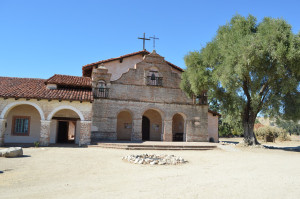
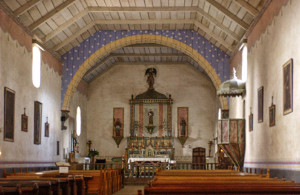
Mission Nuestra Senora de la Soledad
Mission Nuestra Senora de la Soledad was founded by Father Fermin Francisco de Lasuen on October 9, 1791 and it is dedicated to Mary Our Lady of Solitude, it is the 14th California Mission. Mission Soledad is located in the fertile Salinas Valley and the padres had very high hopes that the chosen site would prove to be a good one. Unfortunately, supplies intended for the Mission were lost or appropriated to another Mission and then extreme weather conditions delayed construction so as a result of these problems it took almost six years for the padres to finally build a small thatch-roofed adobe church, it was eventually enlarged in 1805.
Over the following years, more unfortunate events prevented the future success of the Mission Soledad. The Native Americans that lived at the Mission were affected by a serious epidemic and many died; the remaining ones left the Mission in fear that they would also become infected by this mysterious illness. Then after an unusually severe winter, the buildings collapsed and most of the padres complaining of the cold and damp conditions or stricken with rheumatism were transferred to other Missions. Sadly, in May 1835, the last padre left at the nearly deserted Mission Soledad, Father Vicente Francisco de Sarris was found dead and lying at the altar of the church. His body was carried to Mission San Antonio for burial.
The Mexican government secularized and then confiscated the California Missions and the properties were given away or sold. In 1859, the Missions were returned to the Catholic Church but the Mission Soledad remained abandoned and the buildings collapsed from many years of neglect. Almost one hundred years later, in 1954, a restoration project was approved and the small chapel was rebuilt, it is currently used as a local parish for the Diocese of Monterey. In 1963, the padres’ residence was also rebuilt as a small museum.
Mission San Carlos Borromeo de Carmelo
After founding the first mission in San Diego, it was the goal of the Franciscan padres to build a chain of Missions along the coast of Alta California and convert the Native Americans to Christianity. A group of Spanish military soldiers of the Portola expedition was dispatched from San Diego to travel over 400 miles to northern California to build a Presidio near Monterey Bay. At the same time, Father Serra and the other members of the expedition sailed from San Diego in April 1770 on the “San Antonio” ship with supplies and equipment. Mission San Carlos Borromeo de Carmelo was founded June 3, 1770 by Father Junipero Serra and is currently located near the present day city of Carmel; it is the second mission of the California Missions. The Mission is dedicated to Saint Charles Borromeo who was a 16th century Archbishop from Milan, Italy.
Originally, the Mission Carmel was located closer to Monterey Bay where the Portola Expedition had landed and it took six months to build the church at the Presidio. A year later, Father Serra decided that the Mission would be better positioned separate from the Presidio to encourage the Native Americans, who had been rather intimidated by the close proximity of the Spanish soldiers, to join the Mission. A site was chosen five miles to the south of the Presidio in a beautiful and fertile area along the banks of the Carmel River and a new church was built; the old Presidio church formerly used as the Mission continued to be used by the soldiers of the garrison until 1794.
The Mission Carmel church started construction in 1791 and was completed in 1797 under the direction of Father Lausen, the successor of Father Serra. The stone of the Mission was quarried locally and Manuel Ruiz, a master mason, designed the building. It is one of the more beautiful of the California Missions and features two asymmetrical bell towers, one designed with a Moorish-style dome, and also a unique star window over the front entrance. (It has been said that the window was originally intended to be placed on the rectangular side rather than seemingly balanced on one of its points) The interior of the church features a Gothic-style vaulted ceiling, which was an unusual design for a Mission, and today placed upon the altar is the silver service which was originally used by Father Serra.
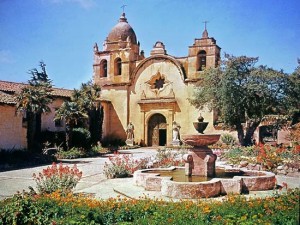
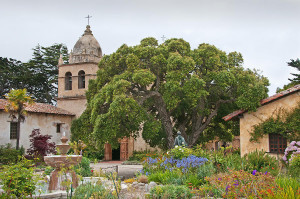
After the Mexican government secularized and then confiscated the California Missions, the property of the Mission Carmel was abandoned for several years. Then, after President Lincoln decreed that the California Missions be returned to the Catholic Church, the slow process of restoration of the Mission Carmel was conducted in 1884, 1924 and 1936. In 1933, the control of the Mission was transferred from the Franciscan Order to the local Diocese of Monterey to be used as a parish church. In 1960, Pope John XXIII designated the Mission Carmel as a basilica. In 1987, the popular Pope John Paul II visited the Mission as part of his U.S. tour. Today, the Mission Carmel is a National Historic Landmark administrated by the National Park Service.
Mission Trivia: Father Serra preferred the setting of the Mission Carmel and decided to make it his headquarters in Alta California, although he continued to travel throughout the region in establishing additional Missions he always returned to the Mission Carmel. Today, visitors to the Mission will be able to see Father Serra’s room which is furnished rather sparingly due to the padre’s vow of poverty taken in his service to the Catholic Church. Father Serra died in 1784 at the Mission Carmel and is buried within the church and the large sarcophagus display was created by the sculptor Jo Mora and it depicts Father Serra at the time of his death, with the figures of Father Crespi standing at the head and Father Lausen and Father Lopez kneeling at the foot of the stone coffin.
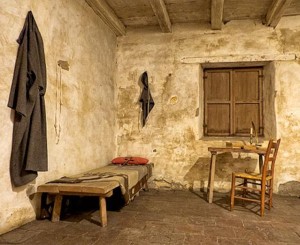

On September 25, 1988 Pope John Paul II beautified Father Junipero Serra, one of the first steps to being declared a saint, and recently on September 23, 2015 Pope Francis canonized him in a service performed at the Basilica of the National Shrine of the Immaculate Conception located in Washington D.C. Also a statue of Father Junipero Serra, representing the State of California, has been placed in the National Statuary Hall in the United States Capitol building in Washington D.C. (as shown below in the photo)
Mission San Juan Bautista
Mission San Juan Bautista was founded on June 24, 1797 by Father Lasuen and is named for Saint John the Baptist; it is the 15th California Mission. The Mission is located near the present day city of San Juan Bautista and is about 17 miles north of Salinas. The first small adobe church at the Mission was built by the local Native Americans and was completed in 1798. In the early years of the Mission, the Native American population grew very quickly to over one thousand and by 1803 there were several more building constructed for the padres’ residence and barracks for the soldiers as well as housing for the Native Americans. The Mission prospered and they grew wheat, barley and corn and also maintained a herd of over a thousand cattle, over 4,000 sheep and over 500 horses.
Unfortunately, like some of the other Missions, the Mission San Juan Bautista was built near the massive San Andreas Fault which runs almost the entire length of California. In 1800 and then again in 1906, the Mission suffered severe damage from earthquakes and the building were repaired several times. Then in 1949, the Mission received funding from the Hearst Foundations and extensive restorations of the existing buildings began to repair the damage from years of neglect after the secularization and confiscation of the California Missions by the Mexican government. Most recently, in 2010 the campanario (bell tower) near the entrance to the Mission was rebuilt and three of the original Mission bells were placed inside. Today, the Mission San Juan Bautista serves as a local parish for the Diocese of Monterey.
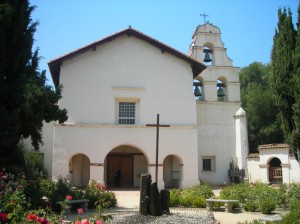
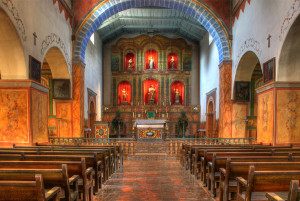
Mission Trivia: The Mission San Juan Bautista is prominently seen in the 1958 Alfred Hitchcock psychological thriller “Vertigo”, which is based on the 1954 novel “D’entre les morts” (Among the Dead) by Boileau-Narcejac. The classic plot of suspense, deceit, mistaken identity and death centers on Scottie Ferguson (played by Jimmy Stewart) who is a former police detective that is forced into early retirement because of a traumatic incident which caused him to develop acrophobia (an extreme fear of heights) and vertigo (a sensation of false movement). Scottie, who is now retired and working as a private investigator, is hired by Gavin Elster to follow his wife Madeline (played Kim Novak), who is behaving very strangely. In one of the most dramatic scenes of the movie, Scottie confronts Madeline at the top of a Mission bell tower and confesses his love before she tragically slips and falls to her death. On the pre-production location scouting trip, the Mission San Juan Bautista was selected because of its bell tower, but unfortunately when the studio returned to the Mission many months later the bell tower had been torn down. Hitchcock still wanted to use the Mission for the interior and exterior shots anyway and in post-production a painting was used to “re-create” the bell tower and the dramatic height need for the climactic scene of the movie.
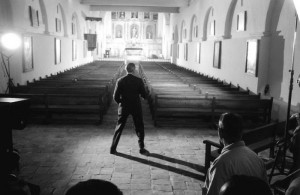
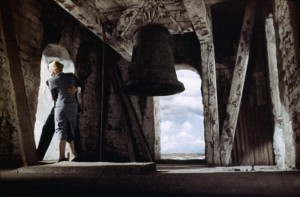
Mission Santa Cruz
Mission Santa Cruz was founded on August 28, 1791 by Father Lasuen and is dedicated to the Sacred Cross; it is the 13th of the California Missions. The site chosen for the Mission was located along the banks of the San Lorenzo River and the first church was built measuring 112 feet long, 29 feet wide and 25 feet in height with adobe walls that were five feet thick and by 1795 the quadrangle was completed, it is one of the smallest missions. Over the following years, despite the fact of its location near the Presidio of Monterey, the Mission was often attacked by hostile Native Americans.
In 1787 govenor Diego de Borica founded a small town named Branciforte located across the San Lorenzo River and just five miles east of the Mission Santa Cruz. The location chosen greatly distressed the padres because the new community would be populated by unsavory settlers that were “bribed” with the offer of an annual salary and housing. Eventually, the Mission population declined as the Native Americans either ran away or died from disease. Then, when the California Missions were secularized and then confiscated by the Mexican government, the property of the Mission Santa Cruz was given away or sold and the buildings remained abandoned for many years.
In 1889, the current Gothic-Revival Holy Cross Church was built near the site of the former Mission Santa Cruz and today it serves as a local parish for the Diocese of Monterey. Located behind the Holy Cross Church and the cemetery is the one of last remaining walls of the original 32 buildings of the Mission. In 1931, a small one-third scale replica of the original Mission Church was built near the site; currently it is used mainly for private services. The replica was commissioned by Gladys Sullivan Doyle and she funded most of the construction costs on the stipulation that she be buried inside and curious visitors can view her grave in a small side room. Today, there is only one original Mission building that was used centuries ago as a dormitory for the Native Americans and it is currently used as a museum for the Santa Cruz Mission State Historic Park.
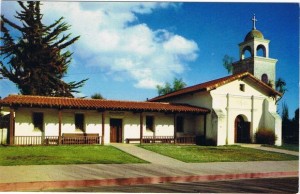
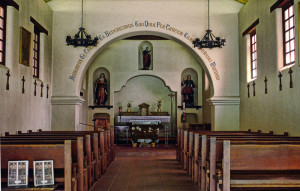
This concludes Part Three of the four part series on the California Missions. In the series, l discuss all of 21 Missions moving from southern to northern California and starting with the first Mission located in San Diego to the San Buenaventura Mission in Part One, then from the Santa Barbara Mission to the San Miguel Arcangel in Part Two and from San Antonio de Padua to the Santa Cruz in Part Three and then from the Santa Clara de Asis Mission to the most northern Mission San Francisco de Solano in Part Four.

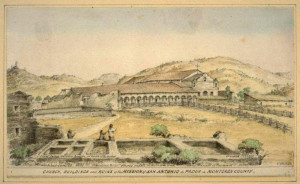
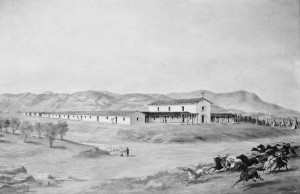
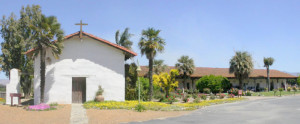
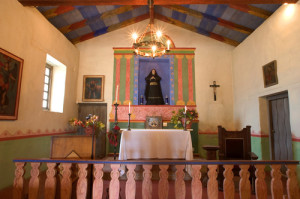
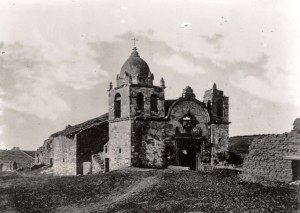
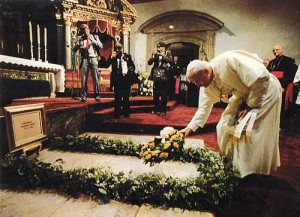
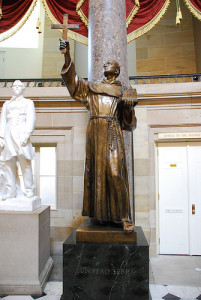
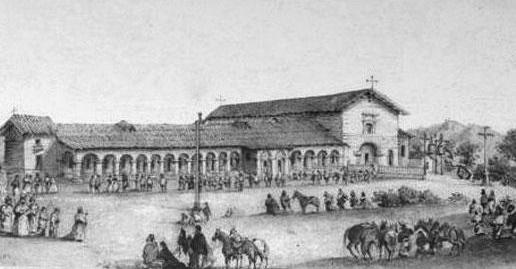
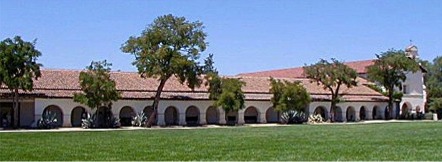
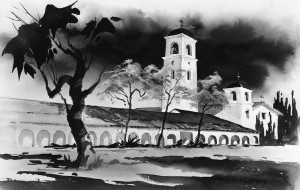
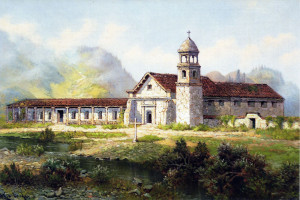
Awesome info. Actually, a review of all I learned in the fifth grade (I think), as I am San Diego, California, girl. Love learning about my state. Thanks so much — well done!
Thanks Wanda! Growing up in California the Missions where a big part of my life – I’m glad you enjoyed the post.